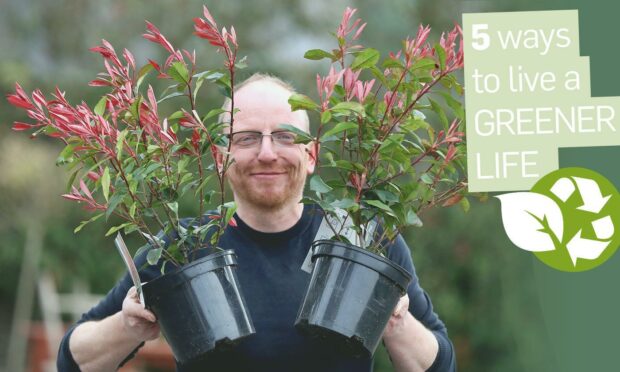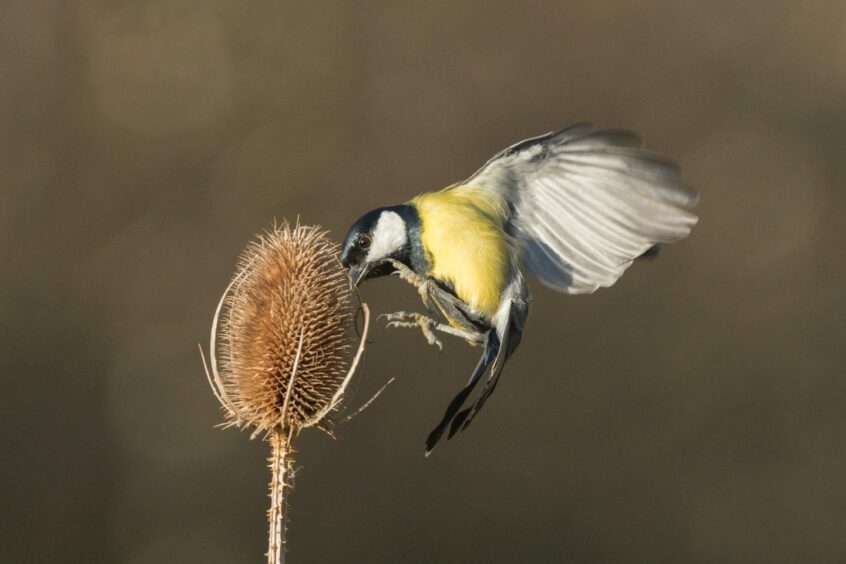It’s not just us humans who struggle in the winter months – spare a thought for your garden wildlife.
As the mercury plummets, Ross Turriff of Jessie’s Kitchen cafe and garden centre in Broughty Ferry has some timely advice on giving nature a helping hand.
And those who like well manicured gardens should look away now.
Relax – messy is good
If you’re dreading the task of clearing all the autumn leaves from your garden, Ross has some words of comfort.
“One of the main things is don’t be too tidy.
“There’s a tendency for everyone to scrape up all the leaves and fallen twigs, put them in the brown bins and get rid of them.
“Obviously, scrape them off your lawn and off your path to stop any hazards. But leave them in the borders if you can. It’s really good for the wildlife.”
So clear the leaves from your path so you don’t slip on them, but Ross says piles of leaves left in borders will give bugs and beasties “nooks and crannies” where they can shelter from the elements.
“You could go to the bother of making a formal bug hotel. But even if you’re just piling it up in random corners that would do the job too.”
Feed the birds
Bird feeders provide a vital lifeline for our feathered friends over the winter.
But you can also provide food for them by leaving what nature has created.
Ross says: “Perennial things like lupins, or anything like that, that have seed heads on them. And maybe things like sunflowers.
“I know they look a bit scruffier, but if you’ve got a corner of your garden that you don’t mind looking a bit scruffy, leave the seed heads on. That’s food for some birds and mammals as well.”
A range of feeders and a bird bath kept clear of ice will help wildlife and provide entertainment as a variety of species flock to your garden.
And Ross says leaving seed heads on is “nature’s way” of supplementing this.
“Rather than cutting everything down and buying loads of stuff from elsewhere.”
Plant wildlife friendly trees and shrubs
You might not feel like donning gardening gloves and getting stuck into the flower beds during the colder months.
But now is actually the best time to plant wildlife loving bare root trees and shrubs in your garden.
“It’s quite a good time for planting trees, when they’re dormant.”
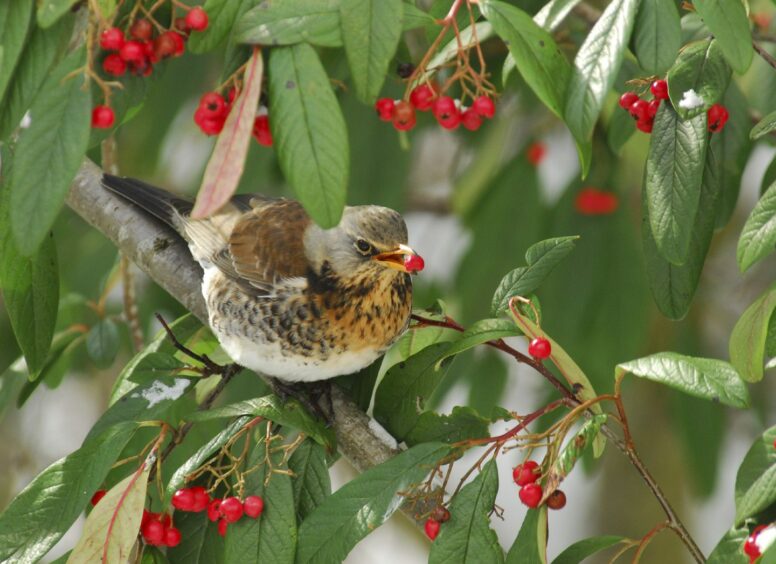
Shrubs like cotoneaster and holly will provide berries for garden birds in the coming years.
Meanwhile, pollinators will appreciate early flowering shrubs such as forsythia or skimmia.
“They flower early spring. That’s an early supply of pollen for bees before anything else is flowering,” says Ross.
Now is also a good time to pop some bulbs in the ground. These will also provide some much needed pollen to help bees survive the chilly early spring days.
Be a friend to the frogs
A garden pond is an oasis for garden wildlife. And by taking a few steps you can make sure it stays wildlife friendly all winter.
“Frogs will be out and about, so it’s really important to keep your pond’s ice broken. Give it a wee crack, pour a bit of hot water on it if it does freeze over.
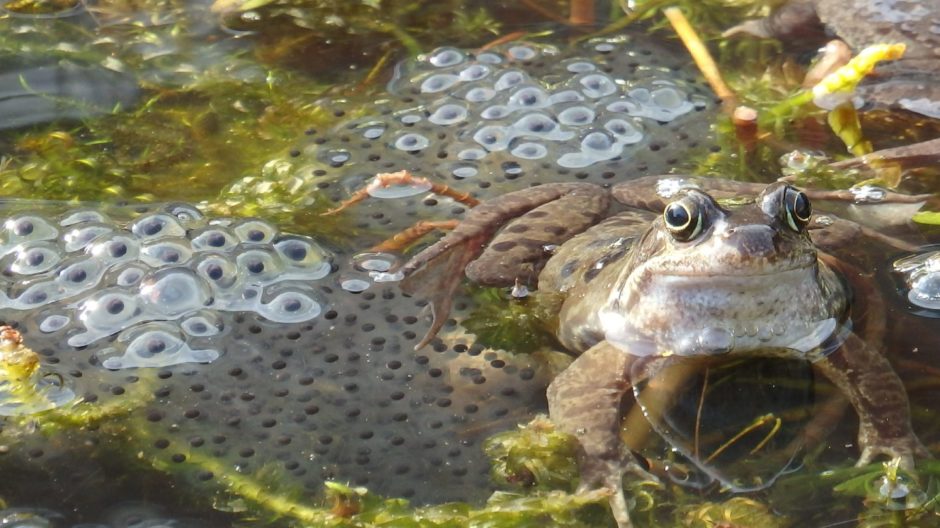
“Popping some tennis balls, or even an old football, in it means that bit won’t freeze. You’ll always have a wee circle of fresh water for anything to get in and out that needs to.”
If you’re digging a pond, make sure the sides have a gentle gradient so creatures can crawl out. Think about what would happen if they removed the steps from your local swimming pool.
Cut a hole in your fence – no really
Hacking a hole in your lovely new fence maybe isn’t your first choice of garden maintenance activity.
And it might feel strange asking your neighbours to do the same.
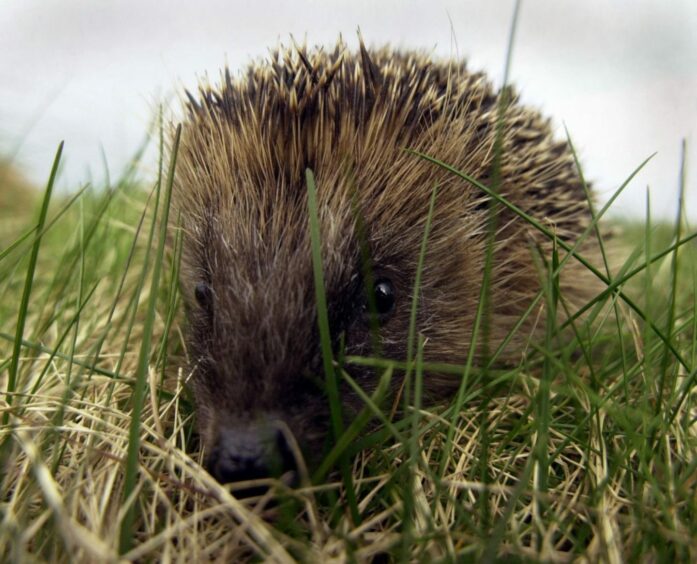
But it just has to be a small hole and it could make all the difference for animals such as hedgehogs.
Ross says animals need to be able to move from garden to garden as they forage for food.
“If you have a whole line of fences down your street, if everybody made sure there was a small hole in all the fences, then that would make a wildlife corridor.
“If you have a particularly neat street, you might want to speak to your neighbours about working out a way of getting a wildlife corridor through the gardens.”
